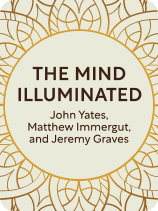

This article is an excerpt from the Shortform book guide to "The Mind Illuminated" by Culadasa, Matthew Immergut, and Jeremy Graves. Shortform has the world's best summaries and analyses of books you should be reading.
Like this article? Sign up for a free trial here.
Do you want to get into meditation but don’t know where to start? What’s the easiest meditation routine for beginners?
Meditation can seem intimidating at first, but there’s nothing to be scared of. It’s one of the most relaxing exercises around, and practicing it every day creates a better life and atmosphere for you.
Below, we’ll look at The Mind Illuminated‘s meditation routine for beginners to get you started.
Build a Meditation Routine
According to the authors, a consistent, regular routine is essential for successful meditation. Meditation is a skill that requires regular practice, like playing basketball: If you don’t establish a daily practice, you might not advance past its early phases.
(Shortform note: Regular practice doesn’t only improve the skill you’re practicing—according to some experts, it also maintains your brain health as you age. When you age, your cognitive skills (such as your memory) weaken, but some research suggests that you can slow down this process by consistently practicing challenging, complex activities.)
We’ll begin this section by describing a meditation routine for beginners the authors recommend. Then, we’ll explore two of the authors’ tips for ensuring this basic meditation is one you’ll practice regularly.
The Basic Meditation
According to the authors, any time you sit down to meditate, you must first take time to ease in both physically and mentally. This preparation reduces the chances that you’ll face distracting sensations, thoughts, and feelings during your basic meditation.
First, ease into your meditation session physically by finding a stable, comfortable position on a chair or the floor. If you choose the latter, cross your legs or tuck your ankles under your opposite leg’s knee or thigh. These poses provide stability so you’re less likely to adjust your position (which would be distracting). Next, straighten your back so your head and neck are aligned. This position minimizes neck and back pain, which in turn minimizes distraction. Finally, keep your eyes closed, especially if you’re new to meditation—this also makes it easier to avoid distractions.
Next, the authors recommend mentally preparing for meditation by reflecting on two questions:
- What’s your goal for this meditation session? Setting a small, achievable goal before you meditate (such as “focus on pleasurable sensations”) prevents you from setting an unreasonable goal you’ll have trouble achieving (such as “ignore all distractions”).
- What distractions might get in the way of that goal? For instance, a work-related worry might be likely to distract you. Mentally listing such distractions in advance makes it easier to recognize them as distractions so you can refocus on your focal point.
The Five-Step Basic Meditation
Once you’ve eased into your meditation session, you’re ready to begin the basic meditation that you’ll continue practicing through all the phases. According to the authors, this meditation helps you cultivate strong concentration and mindfulness. As previously noted, both of these mental states improve your life and are essential for reaching enlightenment. We’ve organized the authors’ basic meditation into five steps that have you progressively narrow your focal point while maintaining background awareness.
Step 1: Make sensory input in the present moment your focal point while maintaining background awareness of everything else. For instance, focus on the smell of the room and the air’s temperature. If something in your background awareness (anything that’s not sensory input in the present moment) grabs your attention, such as a thought about something on your to-do list, simply notice it. Then, gently return your attention to your focal point.
Step 2: Make bodily sensations your focal point while maintaining background awareness of everything else. For instance, notice your heartbeat. Once again, if something in your background awareness grabs your attention—such as a sound, smell, memory, or thought—simply notice it, then gently return your attention to your focal point.
Step 3: Repeat Step 2, with one difference—make any breath-related sensations your focal point. For instance, notice the feeling of your stomach touching your shirt as you exhale. Keep your breathing natural while doing this.
Step 4: Repeat Step 3, but with a narrower focal point: breath-related sensations in your nose. You may find this easiest if you breathe only through your nose, as the high volume of air passing through your narrow nostrils will produce subtle but noticeable sensations.
Step 5: Maintain Step 4 for the duration of your meditation session (15 or more minutes).
Tip 1: Schedule Daily Meditation Time
According to the authors, the best way to ensure you meditate regularly is to schedule daily meditation time. When you’re new to meditation, aim for 15-minute sessions. After a week or two, increase this duration by five minutes every few days until you’ve exceeded 45 minutes.
Additionally, the authors recommend scheduling your meditation session at the same time every day—this makes it an automatic habit. By contrast, if you leave the time of your meditation session up to how you’re feeling, you might procrastinate or avoid it altogether. Pick and stick with a time of day when you’re typically alert and calm so that you don’t fall asleep or get distracted by frantic thoughts. Then, once you’ve picked the ideal time to meditate, protect it: Don’t schedule other commitments at that time.
Tip 2: Make Meditation Enjoyable
If you find it hard to maintain a daily meditation routine, you may assume you’re undisciplined and need stricter routines. However, the authors insist that strict discipline will associate meditation with negative feelings, which will make you avoid it.
Instead, see your struggle to maintain a routine as a sign that you need motivation. To boost your motivation, make meditation more enjoyable so you’ll want to meditate daily. One way to do so is to find meditation-related inspiration: Talk to experts, listen to a podcast about meditating, and research the benefits of meditation. Another option is to fixate on feelings of pleasure while meditating. For instance, enjoy the feeling of calmness you experience. You’ll start looking forward to meditating so you can re-experience these pleasures.

———End of Preview———
Like what you just read? Read the rest of the world's best book summary and analysis of Culadasa, Matthew Immergut, and Jeremy Graves's "The Mind Illuminated" at Shortform.
Here's what you'll find in our full The Mind Illuminated summary:
- That the true goal of meditation is to reach enlightenment
- The 10 sequential stages you can follow to improve your meditation practice
- Cultural, historical, and scientific insights about meditation






